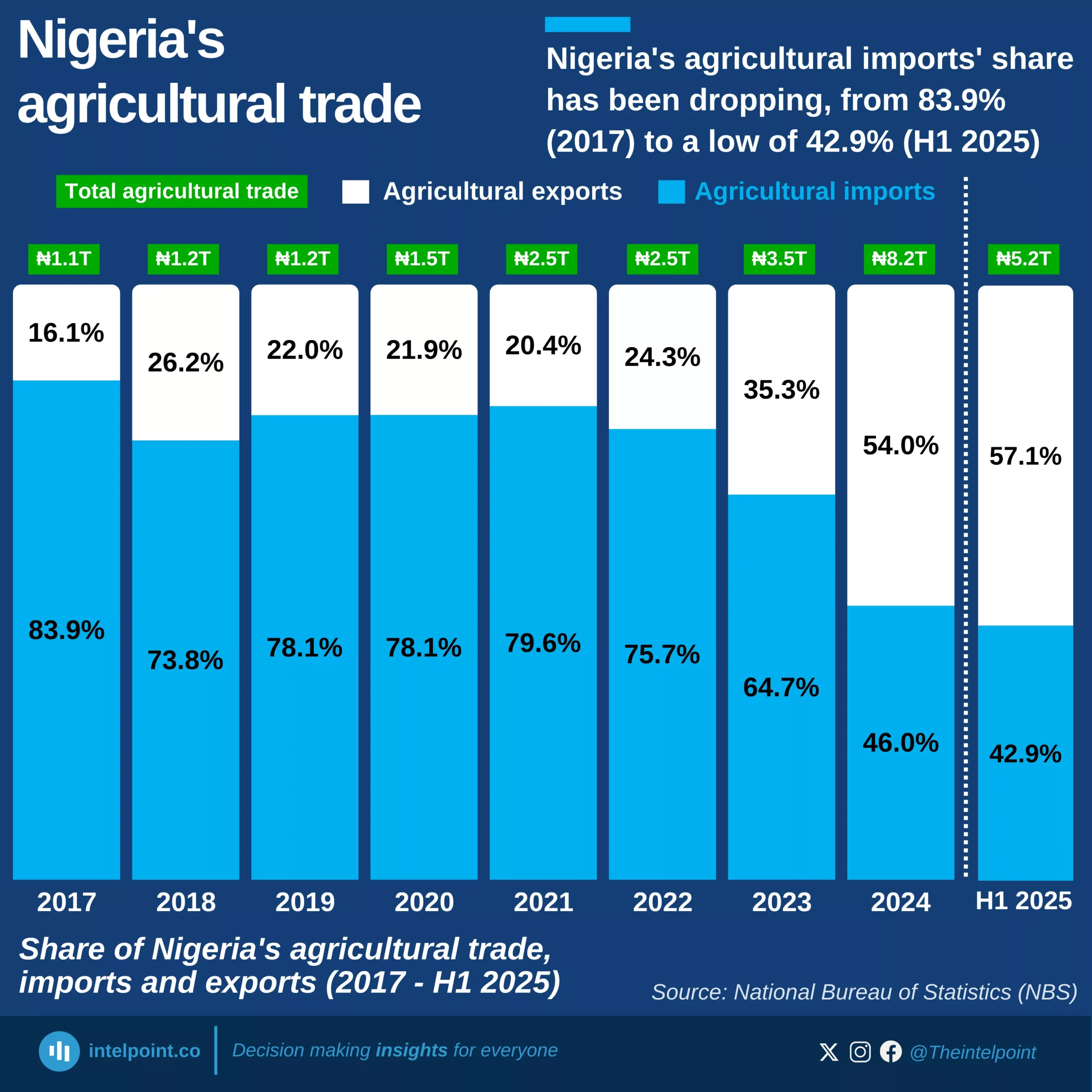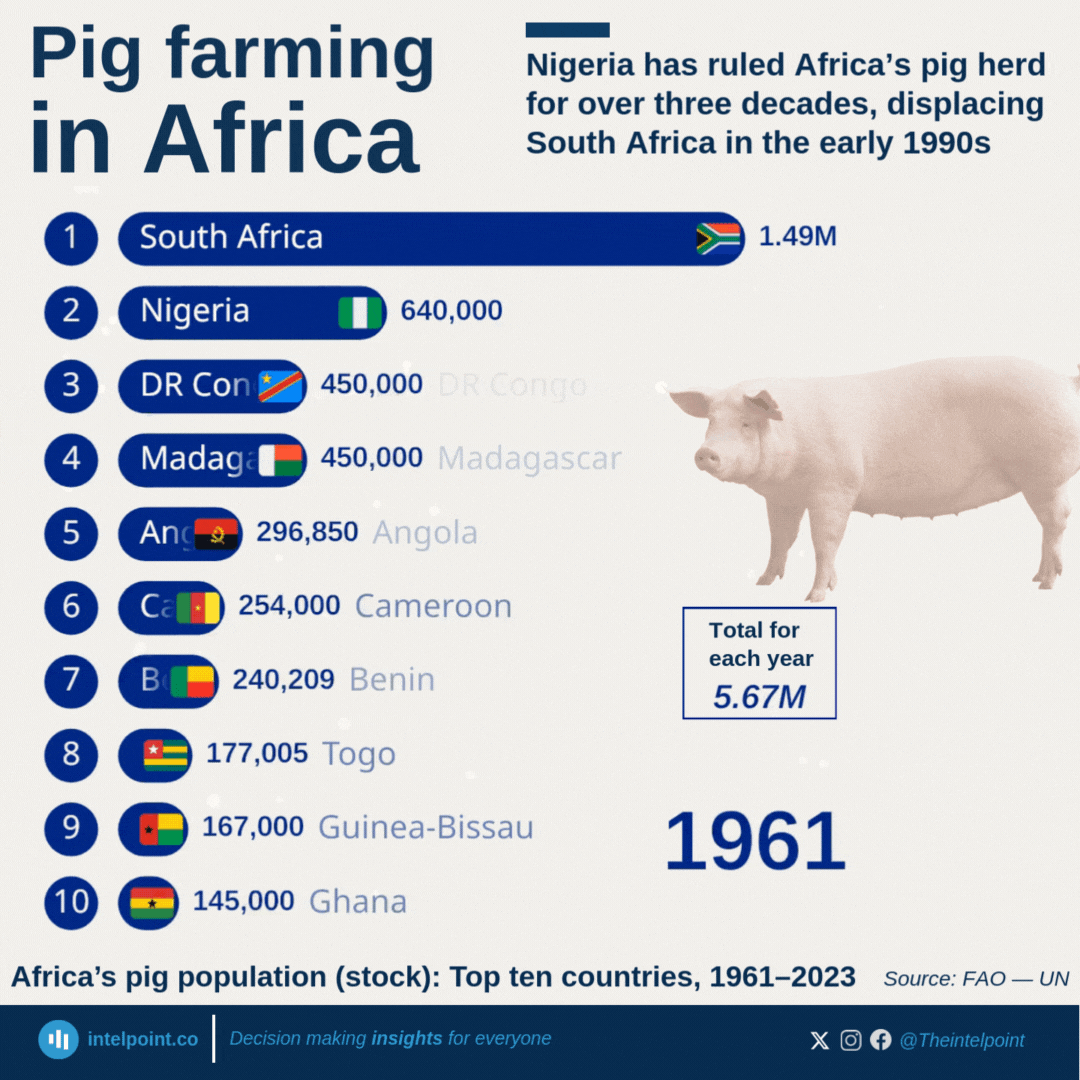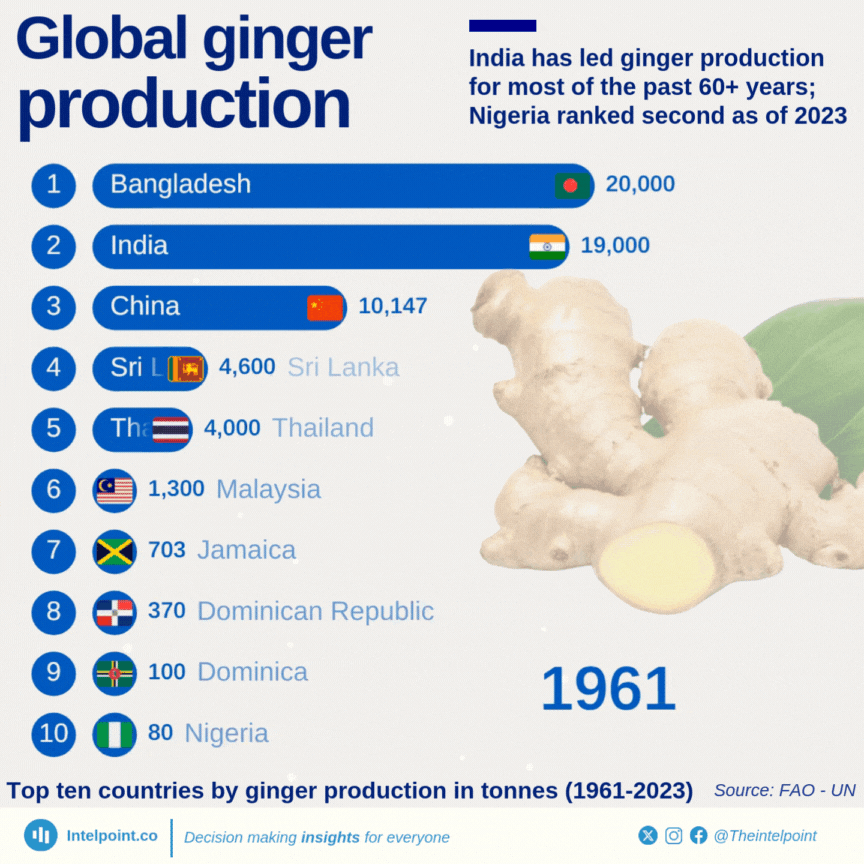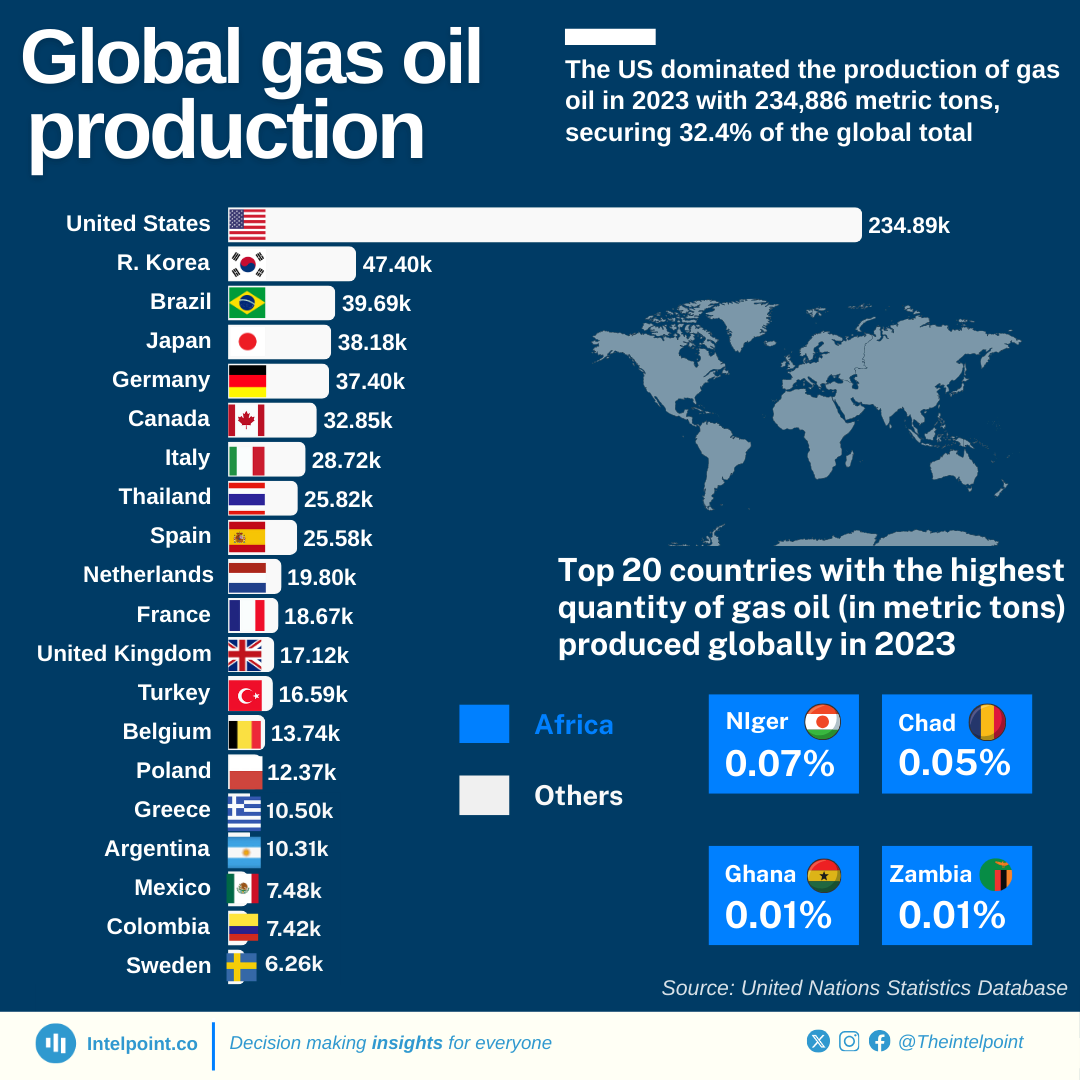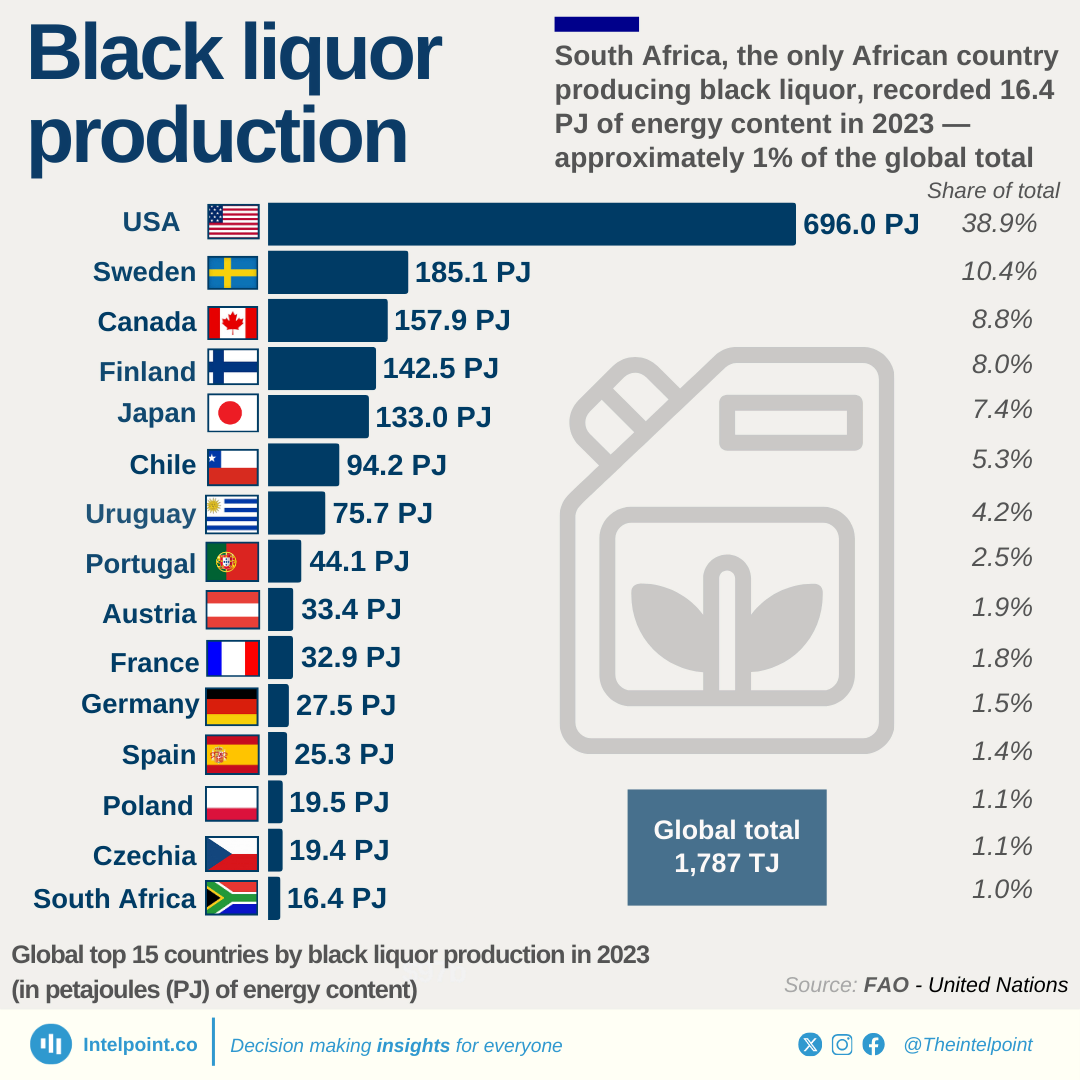Global public sector funding to agriculture reached a cumulative total of $878 trillion between 1991 and 2023, but most of it went to just a few countries. The bulk of this money, provided by governments and development banks, was spent within each country to support its own agriculture sector. Over 75% of the total went to just 10 countries.
In those same years, the United States received over $199 trillion in public funding for agriculture — the highest of any country. That’s about $6 trillion per year. Japan followed with $166 trillion, and China with $122 trillion. These figures reflect serious long-term backing for farmers, infrastructure, and food production.
Nigeria ranked 41st out of 145 countries tracked, receiving just over $1 trillion. For a population of more than 200 million, that low level of support helps explain the country’s high food prices, poor yields, and heavy reliance on imports.
